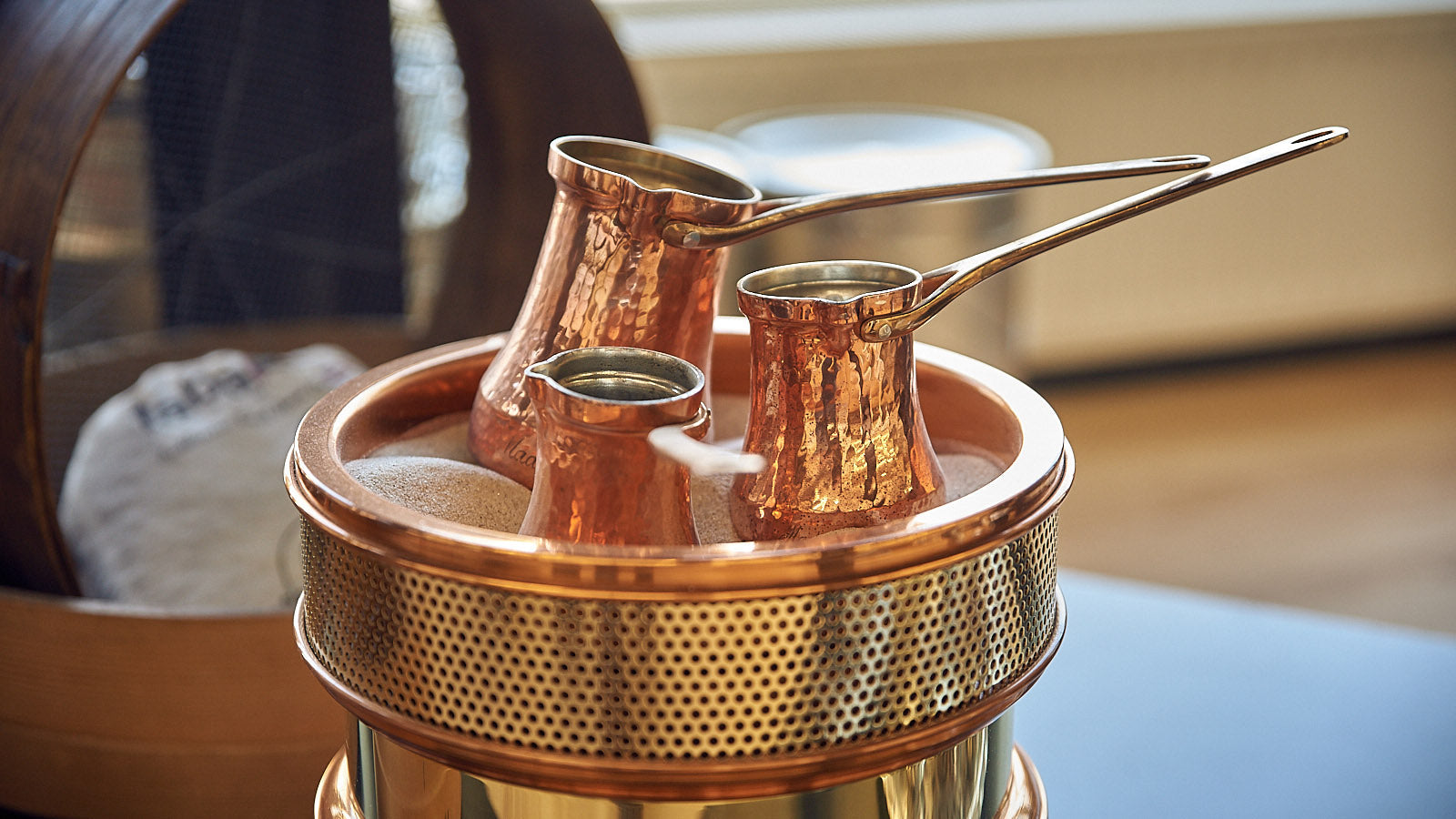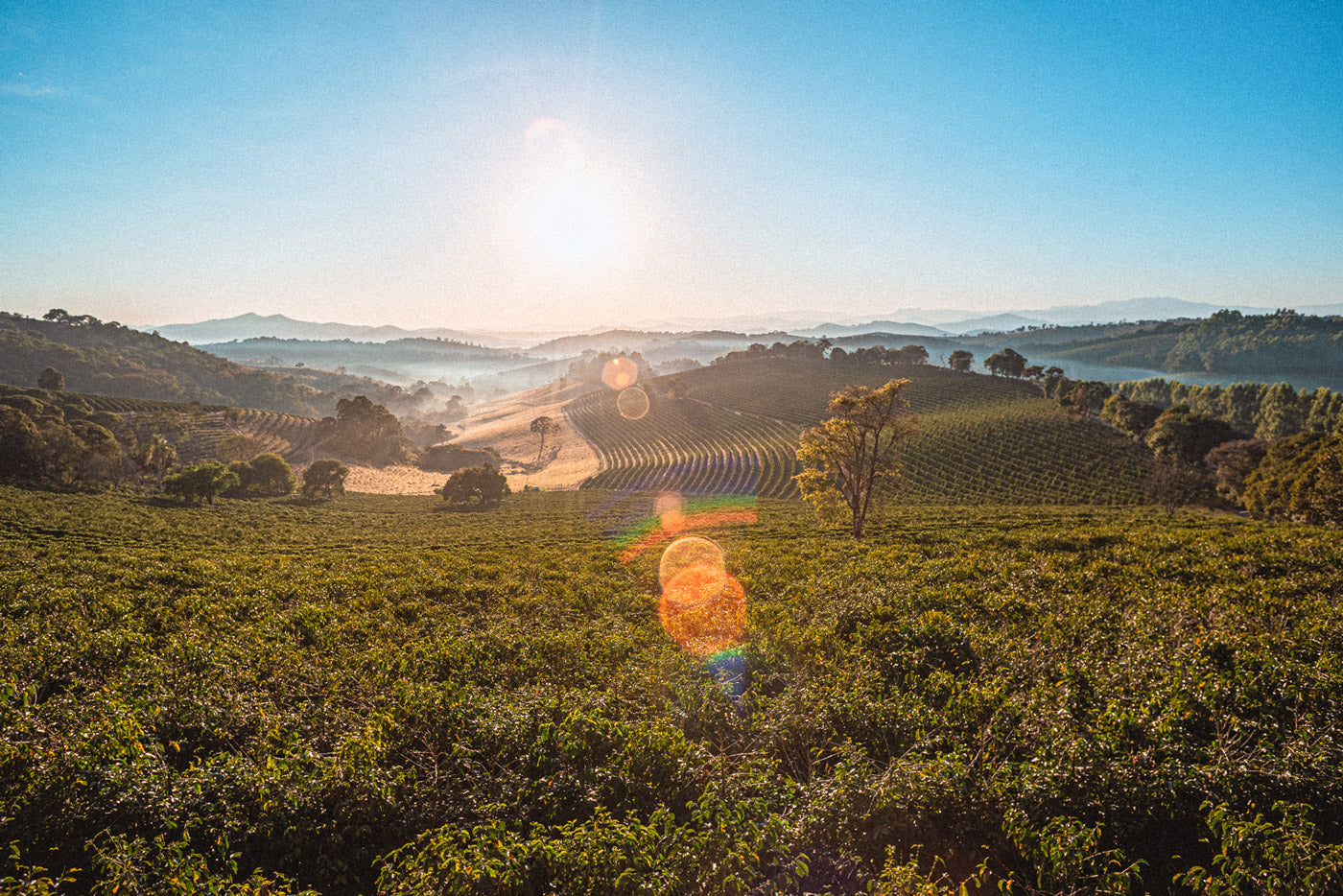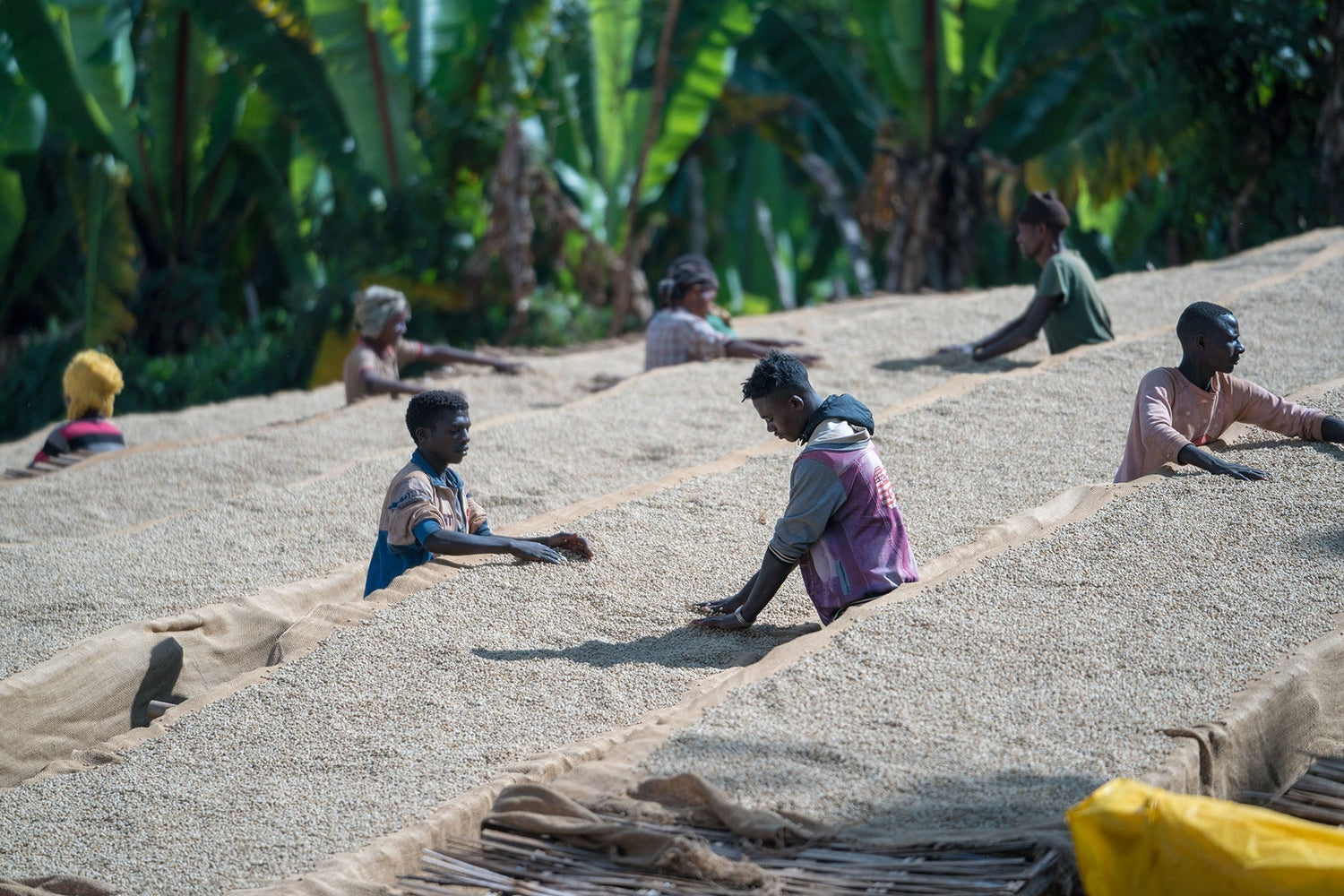Coffee was discovered in Ethiopia and then began its triumphant march through the Middle East and throughout Europe. Over time, this brown gold has conquered the entire world. Many different ways of preparing coffee have emerged. One special type is Turkish coffee. We'll explore this preparation method and see if you can also enjoy specialty coffee the Turkish way.
Turkish coffee – why the grounds remain in the coffee
Turkish coffee is also called mocha – named after the Yemeni port city of Mocha, from which coffee originating in Ethiopia was already being shipped all over the world. In the 16th century, the Ottoman Empire conquered Yemen and thus also this port city. The prevailing coffee culture there was quickly adopted by the Ottomans. The first coffee house opened in Istanbul as early as 1554. Since there were no coffee filters at that time, the coffee powder was boiled in a pot together with the water, which meant that there was always a good portion of coffee grounds in the cup. Under these two names, "mocha" and "Turkish coffee," the preparation method spread throughout Europe during the Ottoman rule. Even today, coffee is still prepared this way in many countries.
Turkish coffee – preparation

To make Turkish coffee, the beans are ground very finely – almost like dust. These are then boiled together with cold water (and sometimes sugar) in a small, long-stemmed metal pot. The coffee grounds in the cup are therefore also characteristic of mocha. The long-stemmed pot is called a cezve in Turkish, ibrik in Arabic, briki in Greek, and džezva in the Balkans. The preparation is the same everywhere, usually varying only in the sweetening and seasoning of the coffee. Cardamom is popular in the Arab world, and mocha is drunk without sugar. Turks generally do not add any spices (except for the occasional rose water), and there are three different sweetness levels. Greeks and the rest of the Balkans generally do not spice their coffee and also enjoy it in varying degrees of sweetness. Originally, the pots were placed in a bed of hot sand or in the embers of a fire. Of course, you can also do this on a stovetop or a gas flame these days. However, the classic sand-baked coffee preparation is making a comeback. This is especially true because the coffee is slowly boiled this way, allowing its unique aroma to develop.
Turkish coffee – recipe
For Turkish coffee, you need a dark roast. Of course, you can also use specialty coffee. After all, our dark roasts are also specialty coffees. The "problem" with this is that if it's a special mocha roast, it's roasted very dark, and this could also burn off the delicate aromas present in the specialty coffee. You should also prepare your Turkish coffee without any additional spices. At least, that's the classic way to prepare it.
- Grind coffee beans very finely
- 1-2 teaspoons of coffee powder into the cezve
- If you like it sweet, add 1-2 teaspoons of sugar to the pot
- Fill the jug with cold water
- Boil the mixture slowly 2 to 3 times (do NOT allow boiling point to be reached)
- As soon as foam forms and rises up the side of the pot, the Turkish coffee is ready
- Distribute the foam with a spoon among all cups and pour the coffee
If you prefer, you can also pour the coffee through a filter paper after boiling. However, this changes the body of the mocha, as it removes almost all suspended particles.
Turkish coffee – the special aroma
The result of this preparation method is a strong, aromatic coffee. It is served in small cups, with quantities around 60 to 90 milliliters per cup. Often served with a piece of Turkish delight (Turkish honey) and a glass of water. Due to the way it is prepared, Turkish coffee has many suspended particles in the cup, resulting in a strong, almost syrupy body. In some countries, it is also spiced with cloves, cardamom, or cinnamon—and rarely with rose water or nutmeg.

Turkish coffee – where can I find it?
Well, as the name suggests, Turkish coffee is still widely consumed in Turkey, as well as in many Arab countries, Greece, and the Balkans. In some African countries, coffee is still prepared the mocha way, meaning without a filter. For example, in Ethiopia, during the traditional coffee ceremony. In both the ceremony and regular Turkish coffee, the same coffee grounds can be reboiled multiple times: usually two to four times.
Turkish coffee and specialty coffee
Which coffees are suitable for Turkish coffee? Due to the origin of the preparation, coffees from Ethiopia or Yemen are naturally very suitable. However, you can also use coffee beans from Brazil, Vietnam, Colombia, or many other countries. It is important to use 100% Arabica coffee. Mocha beans are usually roasted darker than espresso beans. This results in the chocolate and nutty notes becoming more pronounced and roasted aromas developing. This can also cause problems when using specialty coffee, as emphasis is often placed on bringing out the fruity aromas. These can be eliminated by the very dark roast or overpowered by roasted aromas. In addition, this preparation produces a very strong, dark beverage that contains its own unique flavor spectrum.
Turkish coffee and cupping
In the world of specialty coffee, there are so-called cuppings. These are used to taste new coffees and perform quality control on existing ones. These are prepared similarly to Turkish coffee, but are not as strong, allowing the coffee's delicate aromas to develop.
A cupping is prepared as follows: Coarsely grind 11 g of one or more different coffees (speed 8.5 on the Fellow Ode ) and pour into glasses. Then pour hot water over them and let them steep for four minutes. This causes much of the ground coffee to float to the top, forming a layer called the crust. This is broken up and skimmed off after four minutes.
The Specialty Coffee Association has also established standards for cupping . You can read about them here.
Turkish coffee – wild coffee recipe
Well, preparing a Turkish coffee with our coffees is essentially the same as the original recipe. We recommend a dark roast, preferably 100% Arabica, since the original mocha was also made from 100% Arabica beans. The Hauspresso or Bergsonne are ideal for this.
• Water quantity is measured in cups: 60 to 90 ml per cup
• Coffee is measured in spoons: 1 to 2 teaspoons per cup (approximately 7 g)
- Fill the jug with cold water
- Add sugar (if desired) and coffee
- Stir everything until the coffee powder is fully moistened
- Then heat the liquid slowly
- As soon as the coffee starts to boil, remove from the heat, wait a moment and repeat the process again (do not stir, otherwise the foam will disappear)
- Repeat once or twice and then distribute the resulting foam into the cups (also with a spoon) and then pour the coffee
You can also boil the same coffee grounds multiple times (up to four times). Experiment and see what you like best. With each boil, Turkish coffee's flavors change.
Turkish coffee – how strong is it?

Yes, it's strong. The brewing method gives Turkish coffee a strong flavor and a strong caffeine content. Compare that to an espresso, which has a good 30 mg of caffeine per 25 ml. 25 ml of mocha has a good 65 mg of caffeine. Since Turkish coffee is usually consumed in 60 to 90 ml cups, a cup of mocha can contain up to 156 mg of caffeine, which is more than a cup of filter coffee.
Important : The coffee grounds are NOT to be drunk! They are used, among other things, for the tradition of reading coffee grounds.
Turkish coffee – Conclusion
Turkish coffee, or mocha, is something very special and not difficult to make at home, as you only need a small metal pot called an ibrik or cezve. Finely ground coffee and water are also needed. You can use our dark roasts, which are specialty coffees for espresso. We recommend 100% Arabica, such as our Hauspresso or Bergsonne Espresso. Of course, you can also get a special mocha roast, which is usually even darker than an espresso roast. Following the traditional preparation method, you can expect a full-bodied, robust cup profile with subtle notes of your chosen espresso and the incomparable taste of a centuries-old history.


